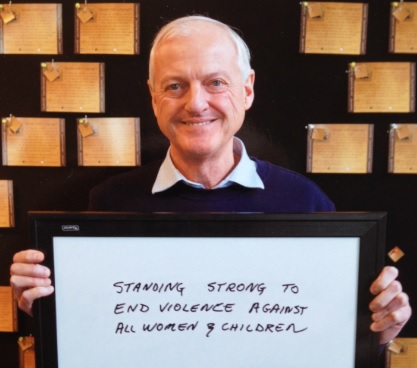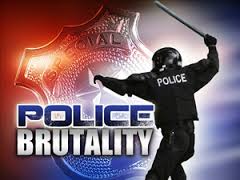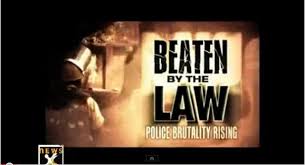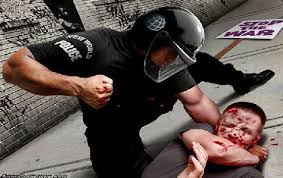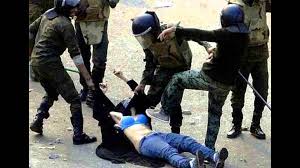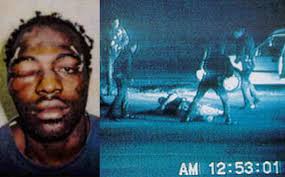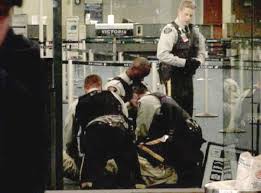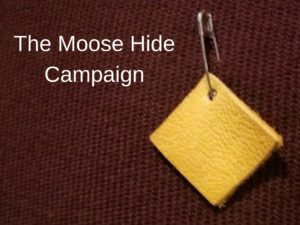 Violence by men against women and children is a severe, secluded crime in every society. That goes for all forms of male-dominated violence—mental cruelty, beatings within families, child abuse, molestations, sexual assault in social situations, stranger to stranger rapes and sexually-motivated kidnappings with sadistic serial killers. Wouldn’t it be wonderful if a grassroots movement occurred where men hold other men accountable for violent behavior towards women and children, ending this travesty? Well, it’s happening and just hit one million contacts. It’s called the Moose Hide Campaign.
Violence by men against women and children is a severe, secluded crime in every society. That goes for all forms of male-dominated violence—mental cruelty, beatings within families, child abuse, molestations, sexual assault in social situations, stranger to stranger rapes and sexually-motivated kidnappings with sadistic serial killers. Wouldn’t it be wonderful if a grassroots movement occurred where men hold other men accountable for violent behavior towards women and children, ending this travesty? Well, it’s happening and just hit one million contacts. It’s called the Moose Hide Campaign.
The Moose Hide Campaign started when a father and daughter realized they could make a difference. Have they ever. In 2011, Paul Lacerte and Raven Lacerte were hunting moose in accordance with their indigenous sustenance rights along British Columbia’s infamous Highway of Tears in northern Canada. Dozens of women have gone missing or were found murdered along this remote road system. It’s part of a pattern where over 1,200 Canadian indigenous women have disappeared or were violently killed in unsolved murders during the past three decades.
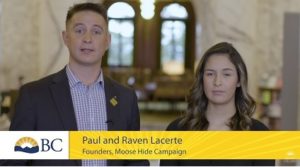 Raven and Paul harvested their moose and were field-dressing it. They began discussing the horrid Highway of Tears situation occurring around them and how they could help. As they skinned their moose, they realized the answer was creating a national dialogue to generate widespread awareness of violence against women and children. Getting people to talk and recognize the magnitude of the problem became their mission. As a talk-stimulator, they tanned their moose hide and cut it into one-inch squares, pinning them to as many people as possible. Seven years later, their one-millionth moose hide square got pinned on a very deserving person.
Raven and Paul harvested their moose and were field-dressing it. They began discussing the horrid Highway of Tears situation occurring around them and how they could help. As they skinned their moose, they realized the answer was creating a national dialogue to generate widespread awareness of violence against women and children. Getting people to talk and recognize the magnitude of the problem became their mission. As a talk-stimulator, they tanned their moose hide and cut it into one-inch squares, pinning them to as many people as possible. Seven years later, their one-millionth moose hide square got pinned on a very deserving person.
One Million Moose Hide Squares Have Been Handed Out
Inspiring one million people to stop what they’re doing, pin-on a square and discuss ending violence against women is impressive. But that’s nothing compared to the Moose Hide Campaign’s vision to have ten million people wearing moosehide squares and pledging their part. So far, the Moose Hide Campaign extends across every region in Canada. It’s getting international notice as well as high-profile political support. At the 2018 campaign gathering in Victoria, the British Columbia Provincial Government granted $2 million to help fund the campaign. That’s additional to money donated by many strong supporters in the private sector.
The Moose Hide Campaign originated within Canada’s indigenous peoples’ community. It’s far from exclusive, however. Sadly, Canada’s First Nations women and children experience three times the rate of violence compared to main-street Canadian society. That’s not unique to Canada, though. Violence against women and children permeates every country. That includes first-world nations like Australia, Great Britain and the United States.
The Moose Hide Campaign Creed
Promoting family decency, gender equality, healthy relationships and curbing substance abuse are core to the Moose Hide Campaign. In the center of the circle is promoting ideas of positive masculinity where men stand up and hold each other accountable for learned and aggressive behavior. Supporting each other is also central to the Moose Hide movement. This is the creed Moose Hide Campaign male supporters adhere to:
- Stand up with women and children.
- Speak out against violence towards them.
- Support each other as men yet hold violent offenders accountable.
- Teach boys about the true meaning of love and respect.
- Become healthy role models for youth and other men.
- Help, hold accountable and heal those who are violent offenders.
- Encourage everyone to take action, make a pledge and pitch in.
Part of the Moose Hide Campaign is helping to address reconciliation from years of systematic abuse against Canada’s indigenous people. Historically, most violent indigenous male offenders were made—not born. For over a century, indigenous people were forced from their traditional lands where sustenance activities like moose hunting were critical to their very survival. Men, women and children were stocked in a reservation system where a cycle of poverty, lack of education, unemployment and suppression of culture created generations of substance abuse and terrible violence.
Reconciliation for Indigenous Peoples
Government agencies reacted to the “Native Problem” by creating residential schools in urban centers. This misguided program took children from their parents and housed them in institutional warehouses where innocent kids were punished for speaking their traditional language and wearing cultural clothes. Behind the shadows, many indigenous children were violently beaten and sexually assaulted. It’s no wonder boys grew into men practicing this learned behavior.
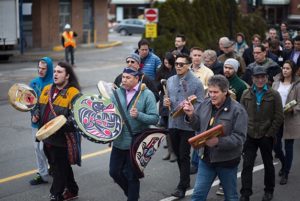 This isn’t making excuses for today’s violent men. It’s a look at reality. The Moose Hide Campaign recognizes horrors of the past and wants that violent behavior to be history. It’s only through actions like those from Raven and Paul Lacerte and their dedicated Moose Hide Campaign supporters that this goal of ending violence against women and children will become a reality.
This isn’t making excuses for today’s violent men. It’s a look at reality. The Moose Hide Campaign recognizes horrors of the past and wants that violent behavior to be history. It’s only through actions like those from Raven and Paul Lacerte and their dedicated Moose Hide Campaign supporters that this goal of ending violence against women and children will become a reality.
Currently, there is another large Canadian movement to reconcile wrongs and injustices done to indigenous peoples. Aside from acknowledging, apologizing and compensating for the residential school disaster, there is a National Inquiry into Missing and Murdered Indigenous Women and Girls underway to determine how so many innocent souls have disappeared or been found murdered. At the center of this circle is the Highway of Tears.
The Highway of Tears
Over the past 30+ years, dozens of women have gone missing or were found murdered along the stretch of road from Prince George in central British Columbia to Prince Rupert on the Pacific coast. Undoubtedly, many are victims of one or more serial killers. Despite police putting massive resources into the investigation, they don’t appear close to solving this mystery and ending the problem. The solution needs to come from grassroots prevention.
 Abduction, rape and murder are the ultimate acts of violence against women and children. Many of these Highway of Tears victims are indigenous women unfortunately placed in high-risk lifestyles like sex workers and hitchhikers. Those actions make them easy targets for predators like whoever are behind the Highway of Tears tragedy.
Abduction, rape and murder are the ultimate acts of violence against women and children. Many of these Highway of Tears victims are indigenous women unfortunately placed in high-risk lifestyles like sex workers and hitchhikers. Those actions make them easy targets for predators like whoever are behind the Highway of Tears tragedy.
The geographic area of the Highway of Tears is symbolic of a much larger region where similar acts occurred or are occurring. The pattern began in the 1970s. Initially, they were known as the Highway Murders. Now, the investigation region expands to include southern and eastern routes. The true victim count could be in the thousands.
This certainly isn’t saying all these missing and murdered women and children are serial killer victims. Many are likely victims of domestic violence or violent acts by someone they’re familiar with. That’s the real signature of violence against women and children. Most of these crimes happen within privacy. Many are never reported.
It’s enough, already. Enough. It has to stop.
The only way to truly end violence against women and children is for everyone to stand up, discuss this massive problem and take action. It’s enough, already. Enough. It has to stop. That starts with supporting movements like the Moose Hide Campaign created by daughter and father, Raven and Paul Lacerte. Bringing this issue into public view and holding violent men accountable is a start. Ending the cycle of violence will work if enough people get involved. It’s a lot of work, and it’s long overdue.
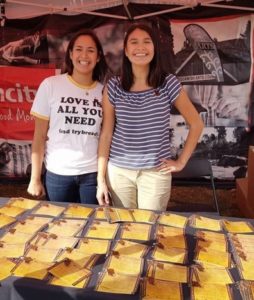 Key to the Moose Hide Campaign’s vision is individuals being inspired to do something about the tragic reality of gender-based and domestic violence. Everyone can find a way to share the campaign message with family, friends, co-workers, organizations and communities. Wearing the moosehide square is a start to engaging conversations… even with complete strangers.
Key to the Moose Hide Campaign’s vision is individuals being inspired to do something about the tragic reality of gender-based and domestic violence. Everyone can find a way to share the campaign message with family, friends, co-workers, organizations and communities. Wearing the moosehide square is a start to engaging conversations… even with complete strangers.
Volunteers for the Moose Hide Campaign pitch in to organize community events and host public kiosks. The spirit is generating awareness and conversations leading to men being held responsible for violent acts. It’s also about helping these men correct their behavior as well as treating and healing underlying issues.
For individuals opposed to moose hunting and using authentic moose hide, there are synthetic squares available. Be assured, all moose hides originate from traditional hunters who harvest moose for food or ceremonial purposes. Many hides come from unfortunate animals in road mishaps. No moose are intentionally hunted to support the Moose Hide Campaign.
For more information on the Moose Hide Campaign, please email garry.rodgers@shaw.ca. Also, please visit the campaign’s website at www.moosehidecampaign.ca. Follow on Facebook and Twitter. Financial donations are appreciated. *No Moose Hide squares are ever sold* The best help you can give is spreading the word about this grassroots movement and raise awareness about the Moose Hide Campaign. Together, we can stand strong to end violence against all women and children.
Here are some interesting links about the Moose Hide Campaign:



